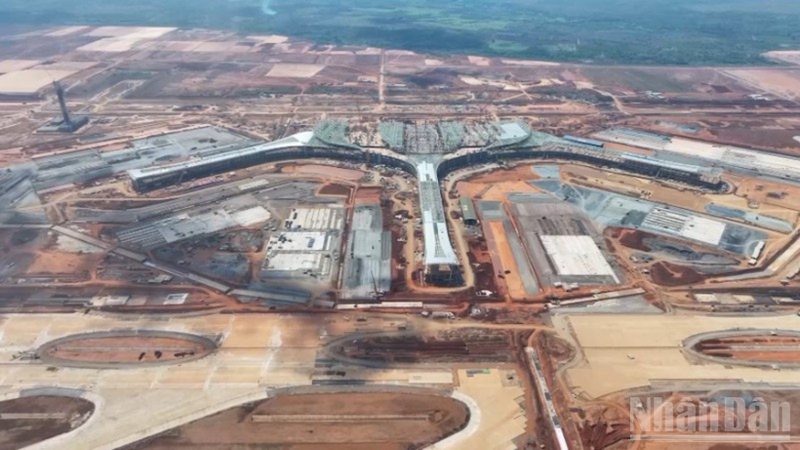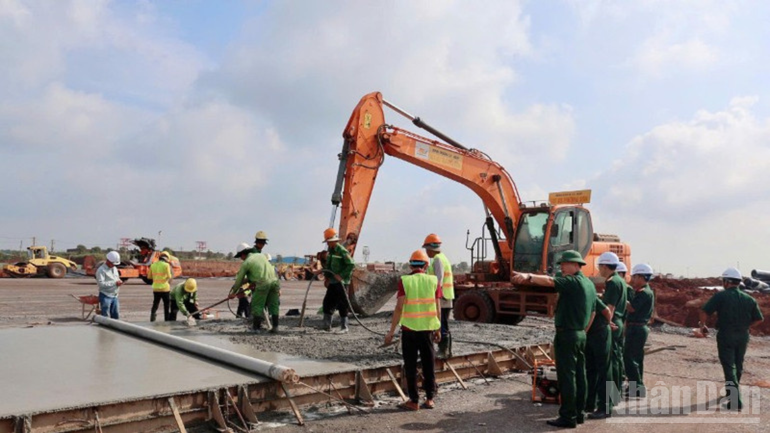Removing bottlenecks in connecting infrastructure, maximising potential of Long Thanh International Airport
Long Thanh International Airport, Viet Nam’s super aviation project, is approaching its first phase of operation in early 2026. But for this huge project to truly take off, the problem of synchronous infrastructure connection with Ho Chi Minh City and neighbouring provinces needs to be urgently solved.

Long Thanh Airport — a key national project of the century — is not only a symbol of the desire to break through but is also expected to become a new growth spur for the southern key economic region, opening a modern aviation gateway on par with the international level.
However, as the time approaches for phase one to be put into operation, in early 2026, a burning question arises: How can Long Thanh airport really take off with a seamless infrastructure system connecting Ho Chi Minh City and neighbouring provinces?
Overloaded highway, urgent expansion of vital route
Currently, the Ho Chi Minh City–Long Thanh–Dau Giay Expressway is the only artery that carries traffic from Ho Chi Minh City to the airport project.
However, this artery is being pushed to its limit as the traffic volume has far exceeded its design capacity, and prolonged congestion has almost become a characteristic of rush hour here. Under this pressure, the project to expand the expressway to 8-10 lanes, at a total investment of more than 15 trillion VND, is considered a lifesaver for the connectivity problem.
The Ho Chi Minh City–Long Thanh–Dau Giay Expressway expansion project is expected to start construction on August 19. The project is one of the transport projects celebrating the 80th anniversary of the August Revolution and the National Day of the Socialist Republic of Viet Nam (September 2, 1945 - 2025).
The groundbreaking not only has a profound commemorative significance but also demonstrates the high determination of all levels and sectors in ensuring smooth traffic infrastructure, ready to meet the needs before the airport is put into operation.
Luong Minh Phuc, Director of the Ho Chi Minh City Transport Project Management Board, affirmed that the early commencement and synchronous completion with the items chaired by the Ministry of Transport will create a great momentum, helping to effectively exploit the capacity of Long Thanh International Airport from the very beginning.
Lieutenant Colonel Le Van Hai, Deputy Director of Truong Son 15 Management Board at Truong Son Construction Corporation, added “The problem of supplies and materials has been solved early. We have proactively supplied from soil and rock mines, signed long-term contracts with mine owners to be ready to support the construction progress.”
Breakthrough mechanism, the key to unlocking infrastructure

According to the planning, the area around Long Thanh Airport requires 29 connecting routes, with a total investment of tens of trillions of VND. Dong Nai alone has planned to invest more than 100 trillion VND for key traffic routes, a figure far exceeding the local budget capacity.
Therefore, socialisation of investment has become an inevitable strategy. Investment models in the form of: public-private partnership (PPP), build-operate-transfer (BOT), and build-transfer (BT), with support from the central budget, are being vigorously implemented by Dong Nai to attract private capital into infrastructure.
Nguyen Ngoc Hieu, expert of the Sustainable Development Programme at Viet Nam-Germany University, assessed: “The key is to remove the bottleneck of attracting investment. When the mechanism is clear, transparent and the profit potential is specific, investors will be ready to invest.”
Not only stopping at the role of an international airport, Long Thanh is also oriented to become a large-scale economic-logistics centre, with a complex of aviation industrial parks, “airport city”, logistics centre, and modern flight operations area.
Duong Van Hieu, Deputy Director of Dong Nai Department of Construction, said: “We are urgently selecting investors for component projects, ensuring progress according to the direction of the government and the Ministry of Construction.”
Experts have stated that in order for transport infrastructure to keep up with the airport’s progress, breakthrough thinking, flexible mechanisms, and a strong regional connectivity strategy are needed. Only when infrastructure bottlenecks are thoroughly removed can Long Thanh International Airport truly play its leading role and open new development space for the entire key economic region in the south.








